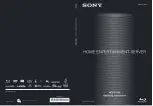
QShell Overview
QShell is the command line interface or shell that may be used to communicate with and control the QuVIS Acuity
using a PC, edit or show controller. This command interface is a powerful tool used for diagnostics and advanced
functions that are not available from the front panel menu system.
The QShell interface is always available on RS232 port A (9-pin connector) located on the front of the Acuity to the
right of the power button. For RS232 devices, you need an “RS-232 null modem” serial cable.
Alternately, a QShell session may also be remotely loaded or accessed using a Telnet terminal program on a PC. In
this case, only network connectivity between the PC and the Acuity is required.
Notice!
If System Security is enabled you must login as a valid user in order to access certain commands. QShell
command access is determined by the permission level assigned to the logged in user account. Advanced system
commands require ADMIN level permission to access.
Command History
The QShell maintains a 50-line history buffer. By using the up/down arrow keys, you can browse through the past
50 commands that have been entered on the command line.
For this feature to work, you terminal must send ANSI sequences in response to up/down arrow keys. Typically this
requires VT-100 terminal emulation.
TIP:
Use the
TAB
key to complete paths and file names. While typing in a file name, type in the first couple of
characters and then press the TAB key. If there are multiple files with the same prefix, keep pressing the TAB
key until the desired file is auto-completed.
Command Types
There are three general types of commands that may be executed from the command line interface: internal
commands, software modules and batch files.
System commands - Allow you to perform built-in functions like copying a file or listing the contents of a
directory. Available internal commands are listed when you use the
help
command. The
help
command
does not list executable software modules or batch files.
Software modules – Software modules are actually small utility programs that can be run from the
command line. System software modules are located in the
sys/mod
directory. You do not need to include
the .mod file extension when invoking one of these commands. Available software modules and their
usage is covered in Appendix C.
Batch Files- Batch files are text files with a “.bat” file extension. Generally these files are placed in the
user/bat
directory. Batch file may contain any command that you would use at the QShell, including
internal commands, software modules and other batch files. Additionally, batch files may be executed from
the front panel menu system for custom applications.
Note:
RS-232 and RS-422 serial connections are not used to transfer data between the Acuity and your computer
or network; they are used for remote control only.
QuVIS Acuity
™
Page 165
QSR Version 3.3
Содержание Acuity
Страница 1: ......
Страница 152: ...Keyboard Hotkeys Description ENTER Complete current edit QuVIS Acuity Page 151 QSR Version 3 3...
Страница 190: ...QuVIS Acuity Page 189 QSR Version 3 1...
Страница 200: ......
















































